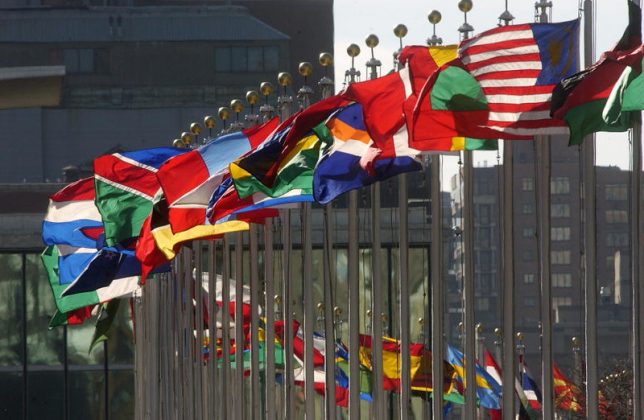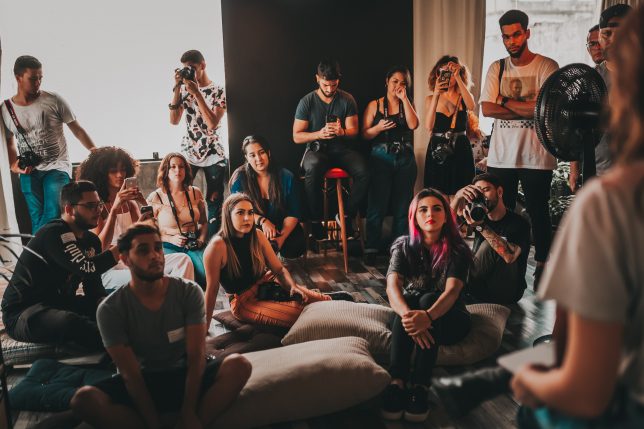
Part personality quiz, part decision tree, part choose-your-own-adventure, a new tool aims to help people find the climate action best suited for them.
By Kathleen Dean Moore, Yale Climate Connections (CC BY-NC-ND 2.5)
The new “Climate Action Quiz,” rolled out through Yale Climate Connections in October 2022, is being used by climate-concerned individuals to help them find the climate action engagement strategy best suited to their lives and passions.
After taking the quiz in a workshop zoomed to Alaska, a group of social-work students decided to link their work to climate justice. A high school teacher decided to teach her accounting students to include the full social, environmental, and climate costs of “business-as-usual” on their balance sheets. A young mother, with her newborn daughter on her shoulder, decided to focus on the rights of future generations. People from across the country have begun to register their climate-action decisions.
These early results are just what the quiz developers had hoped would happen when we created the Climate Action Quiz. Between us, co-author SueEllen Campbell and I estimated we had given or organized at least 250 climate-action events in the past 10 years. Practically without exception, the first audience response often was some variation of: “OK, I’m in! I want to help in the climate struggle. But I simply don’t know what to do.”
We get it. It’s hard. People have lives to live and work to do, and the climate challenges seem infinite and ferocious. It’s not immediately clear how to do anything that will make a real difference. But in an all-hands-on-deck emergency like the climate crisis, there’s no place for bystanders. So we decided to develop a tool to help people get started.
From one set of options to another, the quiz leads individuals to their particular place in planet-healing work.
- Are you ready to act, or do you need a little encouragement?
- Are you happiest when you are working for something or against something?
- Do you like to act alone, or are you ready to join with other people?
- Does climate injustice concern you most, or environmental devastation?
Once they land on their unique calling — Get involved in land use politics in your area. Raise your kids with climate change in mind. Join local stream restoration efforts. Ratchet up your steps to shrink your own climate footprint — the tool offers people resources and gentle, maybe jolly, suggestions for getting started.
Early responses to the quiz have been heartening. “I did it twice.” “I loved the idea of googling my job + climate. I had never considered that.” “This was informative and inspiring.”
We are beginning to hear also from educators who are sending their students to the quiz. Teachers recognize that informing students about the dangers they face is necessary, but often disempowering and sometimes cruel. But they say that leading them to meaningful, effective actions – actions they are comfortable taking, on issues they deeply care about – lifts their spirits and gives them reason to engage.
It is too early to draw any conclusions about what actions people are most likely to choose, and that isn’t really our goal. But what is remarkable is the variety of actions people are choosing to take. We are encouraged by this early result. The problems that the world faces are complex and desperately entangled. So action in any area can send healing effects in many different directions. Work to create social justice will have spinoff effects on environmental thriving, for example, and the reverse is true. It doesn’t matter where people choose to start, as long as they start somewhere.
Many quiz takers’ choices have led them to No. 5: Shrink your own carbon footprint. Once here, the quiz encourages them to go beyond simply making different choices as consumers. We are aware that too close a focus on a personal footprint invites people to blame themselves for causing the climate crisis; that take in effect distracts their attention from those polluters who for crucial decades have used deceit, political payoffs, and economic uncertainty to trap them in a fossil-fuel dependent economy.
Just as the problems are innumerable, the expertise and experience of concerned people come in beautiful and infinite variety. Musicians, aunts and uncles, morticians, beauticians, teachers, fieldworkers, grocers, children, and more all have important contributions to make to the climate struggle. It’s a mistake to think that the only option is to march in a parade (although that can be fun) or change out your lightbulbs (less fun) when the real healing requires transformations in every aspect of our lives. The quiz is a kind of matchmaking, we tell people. And like matchmaking, it is an expression of the universal desire of people to find meaningful connection to the things they care most about in the world.
Kathleen Dean Moore, Ph.D., is Distinguished Professor of Philosophy Emerita at Oregon State University. She is the author or co-editor of five books about climate ethics, including Moral Ground: Ethical Action for a Planet in Peril and Great Tide Rising: Toward Clarity and Moral Courage in a Time of Planetary Change.


